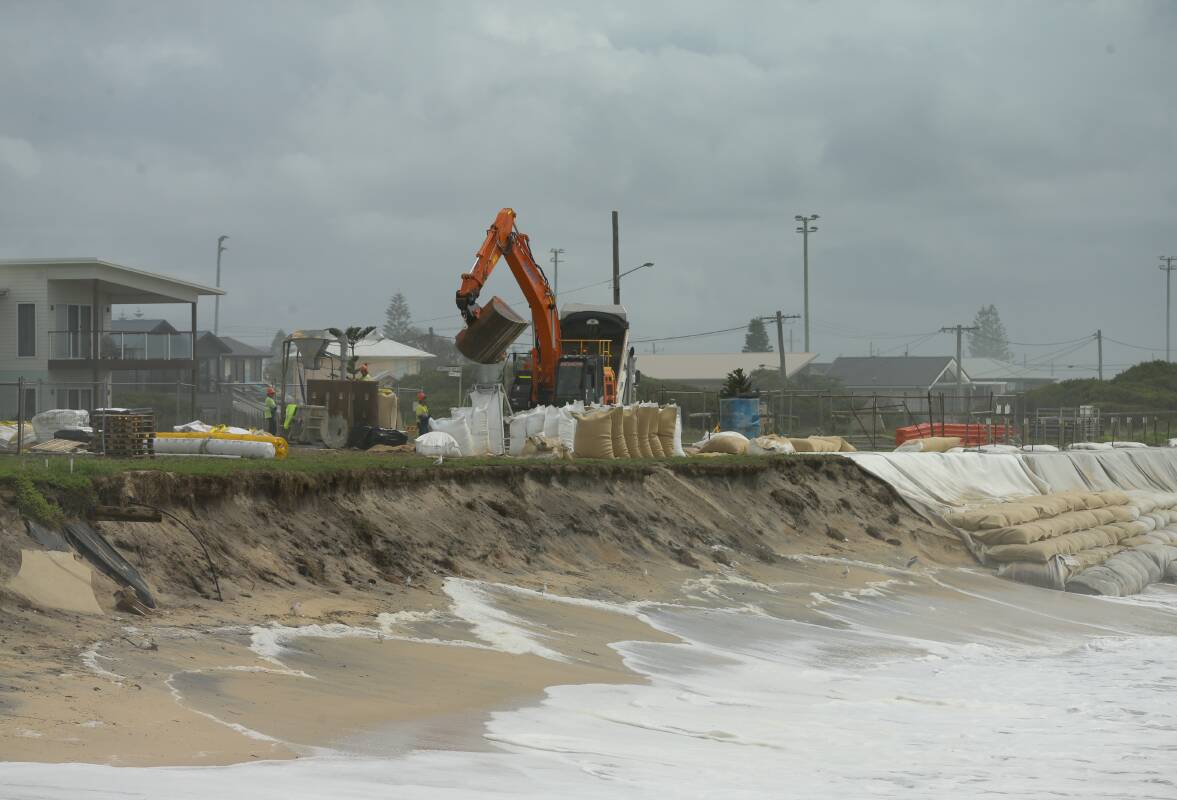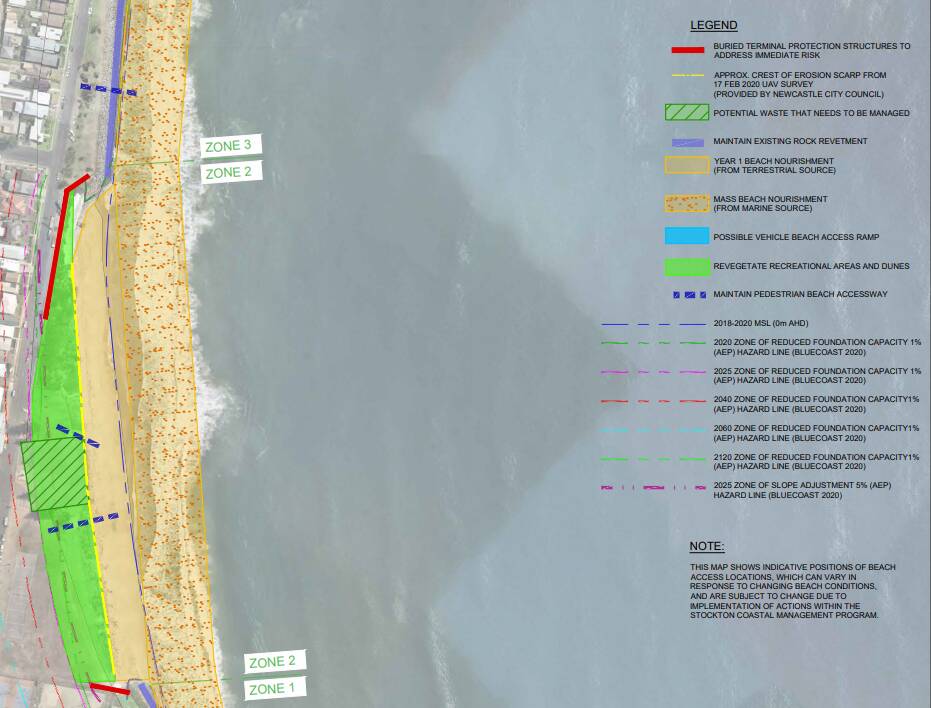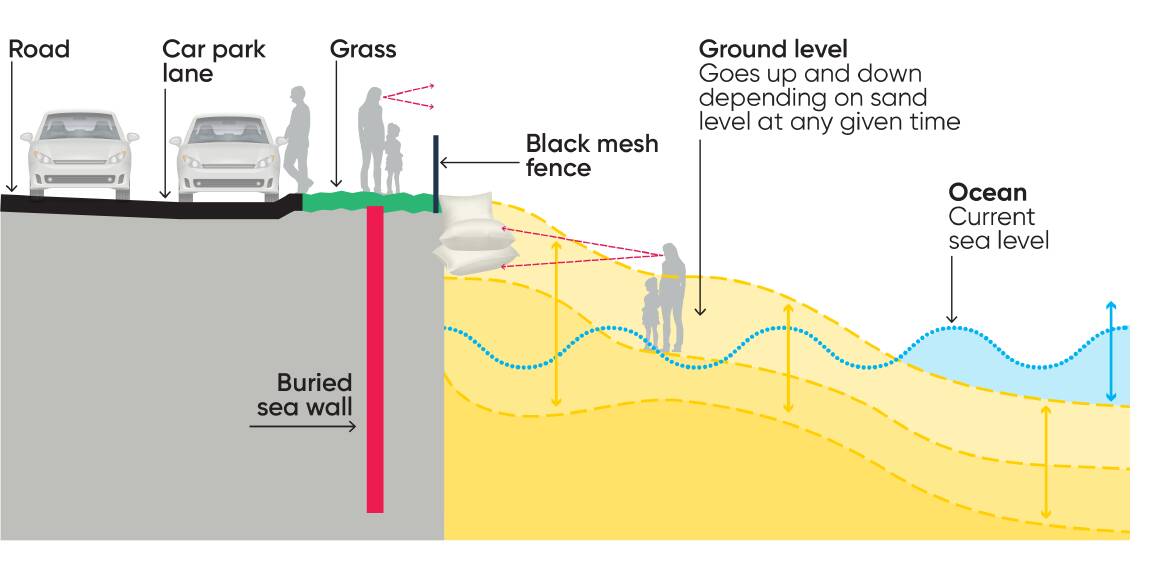
Stockton residents hope council's proposed buried seawall will be an effective mitigation against further erosion "without being overly imposing", but say mass sand nourishment is still the desired solution.
City of Newcastle announced on Saturday morning that tenders would be called soon for the construction of a new buried seawall at the southern end of the existing Mitchell Street rock wall.
The buried seawall will consist of underground vertical concrete piles that extend from street level to 8.5 metres below ground. Once constructed, the council said, only the very top of the round beams will be visible at ground level.
The council's website puts the seawall length at 126 metres. with construction planned to start early next year.
"We considered a range of factors when coming up with this design, including each option's ability to address both erosion from storm events and long-term beach recession, its ability to protect public assets at high risk sites, as well as how well each option enabled access to the beach and how it will look to beach users once its constructed," lord mayor Nuatali Nelmes said.
"We also considered environmental impacts and performance, and the cost to construct and maintain the structure over the long term.
"The repair works, including renewal of sandbags and addition of new rockbags at a range of locations is important to secure these sites ahead of construction of permanent, vertical, buried structures."


The buried seawall is part of the council's Coastal Management Program (CMP) 2020. The CMP estimates construction of "buried terminal protection structures" at the south end of Mitchell Street and north end of the Surf Life Saving Club seawall to cost $3.75million. It also puts maintenance costs at $187,500 every five years.
The seawall is the first of three new structures to be delivered to shield Stockton's coastline and reduce the chance of erosion during large swells, according to the council.
The CMP notes two other buried seawall projects for a total construction cost of more than $6.5 million between the three. Maintenance for the projects would average close to $100,000 per year and the Department of Primary Industries and Environment is listed as a supporting partner.
Stockton resident and University of Newcastle honorary Associate Professor Ron Boyd said the seawall is hoped to be "effective without being overly imposing" but that it is an interim emergency measure.
"The CMP of 2020 identified mass sand nourishment as the preferred solution," Professor Boyd said.
"If there is enough sand on the beach you don't need structures like seawalls. With Stockton, the amount of sand is continuously diminishing so you have to put sand on the beach to give the natural barrier.
"In terms of a community amenity and asset, you always want a beach with a lot of sand on it because that's what the community wants."
Work on sand nourishment has been stalled due to a disagreement over who should be responsible for the project.
"Since they haven't been able to obtain the mass sand nourishment so far then in the meantime they have been forced to go to what is essentially emergency works to protect the beach until the sand arrives," Professor Boyd said.
"The sentiment is that people don't want their houses to wash away and they don't want the roads to wash away so if they can't get the fix that's required in the short term then they need to do something in the meantime to protect infrastructure.
"Nothing is going to be that effective until the sand arrives."
WHAT DO YOU THINK? We've made it a whole lot easier for you to have your say. Our new comment platform requires only one log-in to access articles and to join the discussion on the Newcastle Herald website. Find out how to register so you can enjoy civil, friendly and engaging discussions. Sign up for a subscription here.







